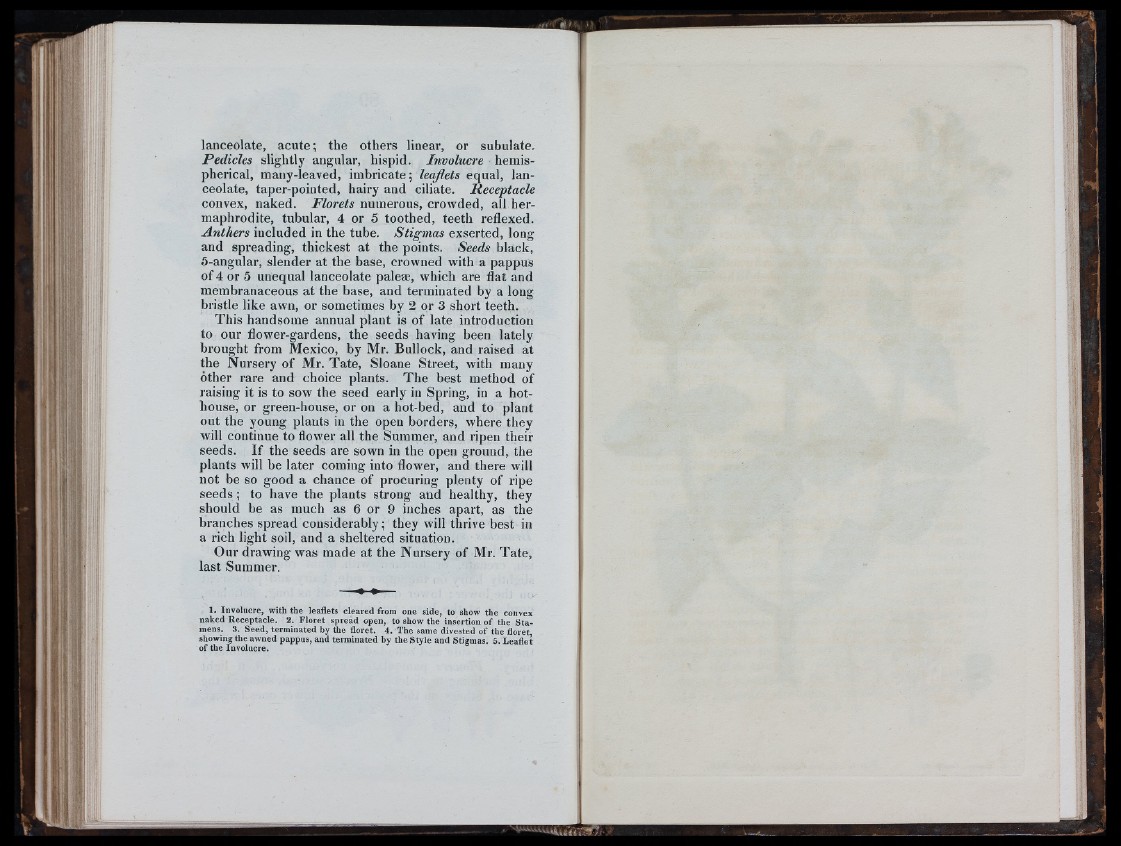
i:t
lanceolate, acute; the others linear, or subulate.
Pedicles slightly angular, hispid. Involucre hemispherical,
many-leaved, imbricate; leaflets equal, lanceolate,
taper-pointed, hairy and ciliate. Receptacle
convex, naked. Florets numerous, crowded, all hermaphrodite,
tubular, 4 or 5 toothed, teeth reflexed.
Anthers included in the tube. Stigmas exserted, long
and spreading, thickest at the points. Seeds black,
5-angular, slender at the base, crowned with a pappus
of 4 or 5 unequal lanceolate palese, which are flat and
membranaceous at the base, and terminated by a long
bristle like awn, or sometimes by 2 or 3 short teeth.
This handsome annual plant is of late introduction
to our flower-gardens, the seeds having been lately
brought from Mexico, by Mr. Bullock, and raised at
the Nursery of Mr. Tate, Sloane Street, with many
other rare and choice plants. The best method of
raising it is to sow the seed early in Spring, in a hothouse,
or green-house, or on a hot-bed, and to plant
out the young plants in the open borders, where they
will continue to flower all the Summer, and ripen their
seeds. If the seeds are sown in the open ground, the
plants will be later coming into flower, and there will
not be so good a chance of procuring plenty of ripe
seed s; to have the plants strong and healthy, they
should be as much as 6 or 9 inches apart, as the
branches spread considerably; they will thrive best in
a rich light soil, and a sheltered situation.
Our drawing was made at the Nursery of Mr. Tate,
last Summer.
1. Involucre, with the leaflets cleared from one side, to show the convex
naked Eeceptacle. 2. Floret spread open, to show the insertion of the Stamens.
3. Seed, terminated by the floret. 4. The same divested of the floret,
showing the awned pappus, and terminated by the Style and Stigmas. 5. Leaflet
of the Involucre.